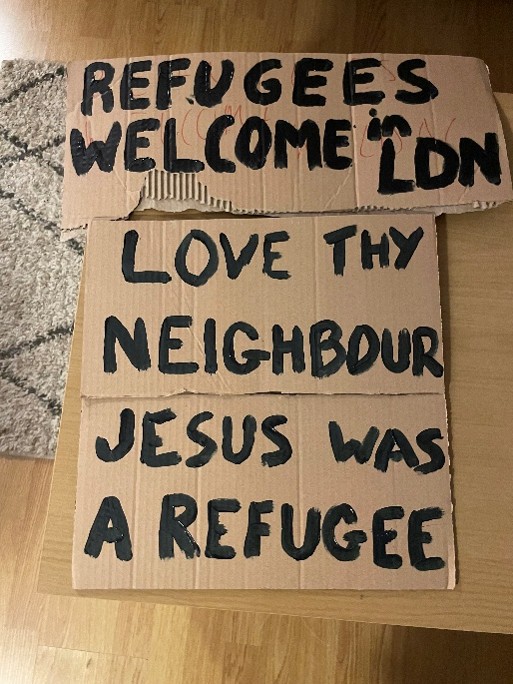President Biden has had a few bad days at the office recently. Time and again, he seems to freeze in public, stumbles over his words, as his voice falters and his sentences tail off. At his first public debate with Donald Trump, he looked just like a man in his eighties, struggling to remember facts, his mind not as alert as it once was. Which, come to think of it, is exactly what many people in their eighties are. And Trump is no spring chicken either. Questions around age dominate the American Presidential election like never before. This is a story of not of two elderly gents in a bar arguing over their fading memories of the past, but between candidates wanting to be the most powerful man, in charge of the most forbidding military and economic powers on the planet.
Old age creeps up on us slowly. To tell when it starts is hard to say. Yet we all know how it ends. Old age is a kind of preparation for death, a slowing down of faculties, a loss of control, a gradual diminishing of powers, preparing us for a new kind of life beyond this one. As a result, in our achievement-oriented age that doesn't believe in a life beyond death, we are tempted to ignore the elderly, shutting them away in residential homes, out of sight and out of mind.
Yet they were valued for what they were – signs of where we are all heading, their stories as object lessons for the young in how to live well (or badly).
Old age, however, is not a slide into passivity. Even as powers diminish, elderly people still have significant agency – keeping the mind active through reading, walking to the shop to buy bread, keeping in touch with relatives, even getting out of a chair as the end draws near can take as much resolve and determination as the more complex tasks of our youth, and are every bit as heroic and human as the more impressive achievements of our sprightlier years.
Former cultures respected the elderly for the experience gained, as members of the community to be looked up to, respected and valued. Teenagers were not considered as the moral arbiters of the future but as immature human beings who still have a lot to learn. The old were given pride of place as those who had gained the wisdom of years. Not that that wisdom was always apparent - the elderly can become cantankerous, repetitive and self-focused as powers diminish. Yet they were valued for what they were – signs of where we are all heading, their stories as object lessons for the young in how to live well (or badly).
The one time when we do place elderly people front and centre, is when they are able to do the things that young people can. Adverts regularly depict old people jumping out of planes, playing rugby, strumming electric guitars - doing the things that young people typically do. Old people who can pretend that they are young are praised to the hilt. Elderly people who lose their memory, their train of thought, stumble and repeat themselves are looked on with pity, not respect. When they do both it confuses us – which is why everyone is worried about Joe.
Part of the wisdom of old age is to recognise when it has come upon us, and what its distinct calling is. In a strange echo of our culture's attitude to the elderly, Joe Biden seems desperate to tell himself and others that he's perfectly capable of doing the job of President, a job that would come much more naturally to someone 20 years younger than him. Surely the wiser and more sensible course would have been to recognise the signs of time, and halfway through his presidency, to have announced that he was not standing again, triggering a leadership race among the Democratic Party so that a new candidate could be ready for the Presidential election without all the doubts about age and capacity in mind.
So, caught between ignoring old age and yearning for lost youth, how then, are we to value the ageing process? After all, one day, it will come on all of us who manage to avoid a premature death.
The main task as the years pass and the shadows lengthen, is to be there for the young,
If we remain active throughout our lives, that activity changes over time. As someone well into my sixties, approaching old age (or perhaps already in it – it is hard to tell?) I recognise my body creaks and does not adapt as it once did. I can't do all that I could in my 30s or 40s. Over time, callings change, and recognising that is part of the wisdom of life. The Christian ethicist Oliver O'Donovan suggests that the calling of old age is to "stand by the side of youth." Elderly people have the task "to show to the young how their generation, the only earlier generation to which the young have direct access, has conceived its tasks and tackled them. If the young are to form their world effectively, they will need models to inherit and to build on."
The prime task of old age is not to withdraw into some retirement village, playing golf every day, going on endless holidays, living the life we wanted to live in our 40s but couldn't because we had to work. It is not to enjoy retirement as a kind of secular heaven, a reward for a lifetime of hard work, with pleasures abounding. There may be time for some of that, but the main task as the years pass and the shadows lengthen, is to be there for the young, not to tell them what to do but to be a witness of a life well lived - or sometimes an object lesson of a life lived badly – often both at the same time. It is to be a sign of how another generation managed to navigate the complications and complexities of life and how for those who have a faith, as a witness to how God has proved faithful over time, space and the shifting sands of culture. And that involves focus from both sides. The younger need to value, respect and prize the elderly for what they offer as a model of life lived and complexity negotiated, and the old need to recognise their changing role as it creeps upon them with the passing of years.
The calling of the elderly is just as important as that of the young or even the middle-aged. Yet it is different. We need to value our older people, not because they can do the things younger people can, but because they are object lessons in how to navigate life, and how to prepare for the next one.
Getting it muddled up helps no one.






